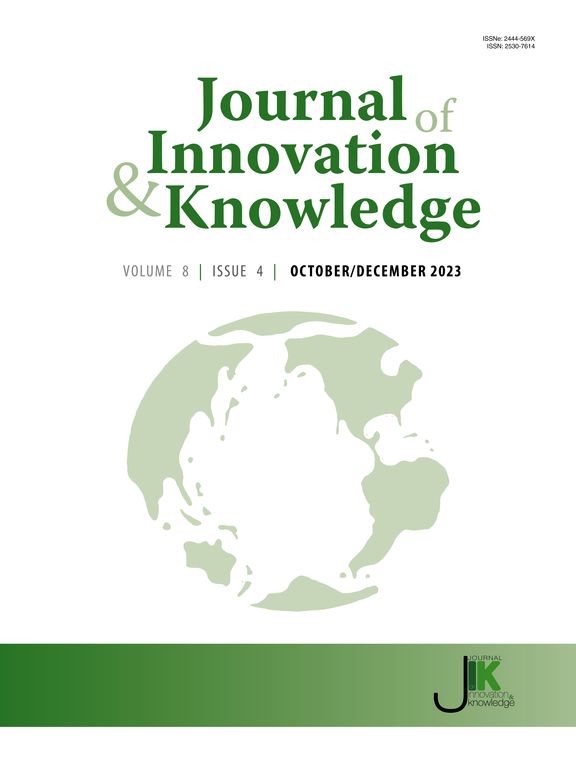碳中和背景下中国低碳城市试点政策对企业绿色创新的影响
IF 15.5
1区 管理学
Q1 BUSINESS
引用次数: 0
摘要
中国的低碳城市试点政策在减少碳污染、促进绿色发展方面发挥着至关重要的作用。它刺激企业的绿色创新(GI),例如通过推广循环碳技术和节能实践。然而,也出现了一种消极的趋势,企业越来越注重低端创新,以获得补贴或遵守监管要求。尽管如此,很少有研究探讨在LCCPP框架下驱动企业采用实质或表面GI的机制。本研究使用2007-2022年中国a股上市公司数据,采用异中异模型分析LCCPP对GI的影响。结果表明,虽然LCCPP显著促进了实质性地理标志,但其对战略性地理标志的影响微乎其微。该政策主要通过提高公众的环境意识来促进实质性地理标志,而管理上的短视则缓和了这种关系。异质性分析表明,在技术密集型企业和固定资产比率较高的企业中,LCCPP提高了GI。但对劳动密集型企业和固定资产比率较低的企业影响有限。这些发现有助于现有的低碳试点政策文献,并为在碳中和背景下加强创新激励提供政策建议。本文章由计算机程序翻译,如有差异,请以英文原文为准。
The influence of China’s low-carbon city pilot policy on the green innovation of enterprises in the context of carbon neutrality
China’s low-carbon city pilot policy (LCCPP) plays a crucial role in reducing carbon pollution and promoting green development. It stimulates enterprises’ green innovation (GI), such as through the promotion of circular carbon technologies and energy-efficient practices. However, a negative trend has emerged, wherein enterprises are increasingly focusing on low-end innovation to secure subsidies or comply with regulatory requirements. Despite this situation, few studies have explored the mechanisms driving enterprises’ adoption of either substantial or superficial GI within the LCCPP framework. This study uses data from Chinese A-share listed companies (2007–2022) and employed a difference-in-differences model to analyze the impact of the LCCPP on GI. Results show that while the LCCPP significantly promotes substantive GI, its effect on strategic GI is minimal. The policy primarily promotes substantive GI by increasing public environmental awareness, with managerial myopia moderating this relationship. Heterogeneity analysis reveals that the LCCPP boosts GI in technology-intensive enterprises and those with a high fixed asset ratio. However, it has limited impact on labor-intensive enterprises and those with a low fixed asset ratio. These findings contribute to the existing body of literature on low-carbon pilot policies and offer policy recommendations for enhancing innovation incentives in the context of carbon neutrality.
求助全文
通过发布文献求助,成功后即可免费获取论文全文。
去求助
来源期刊

Journal of Innovation & Knowledge
Multiple-
CiteScore
16.10
自引率
12.70%
发文量
118
审稿时长
37 days
期刊介绍:
The Journal of Innovation and Knowledge (JIK) explores how innovation drives knowledge creation and vice versa, emphasizing that not all innovation leads to knowledge, but enduring innovation across diverse fields fosters theory and knowledge. JIK invites papers on innovations enhancing or generating knowledge, covering innovation processes, structures, outcomes, and behaviors at various levels. Articles in JIK examine knowledge-related changes promoting innovation for societal best practices.
JIK serves as a platform for high-quality studies undergoing double-blind peer review, ensuring global dissemination to scholars, practitioners, and policymakers who recognize innovation and knowledge as economic drivers. It publishes theoretical articles, empirical studies, case studies, reviews, and other content, addressing current trends and emerging topics in innovation and knowledge. The journal welcomes suggestions for special issues and encourages articles to showcase contextual differences and lessons for a broad audience.
In essence, JIK is an interdisciplinary journal dedicated to advancing theoretical and practical innovations and knowledge across multiple fields, including Economics, Business and Management, Engineering, Science, and Education.
 求助内容:
求助内容: 应助结果提醒方式:
应助结果提醒方式:


